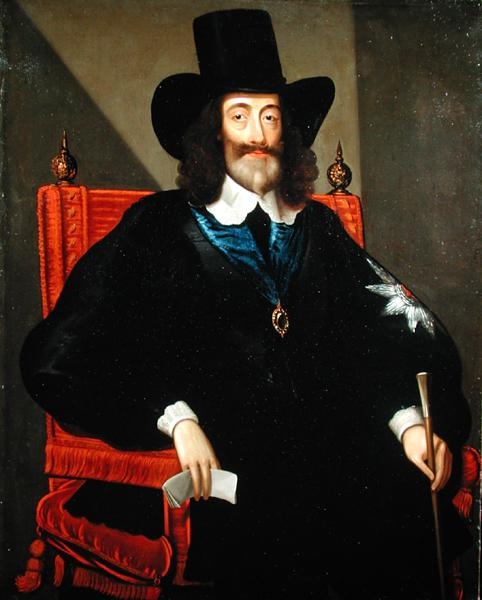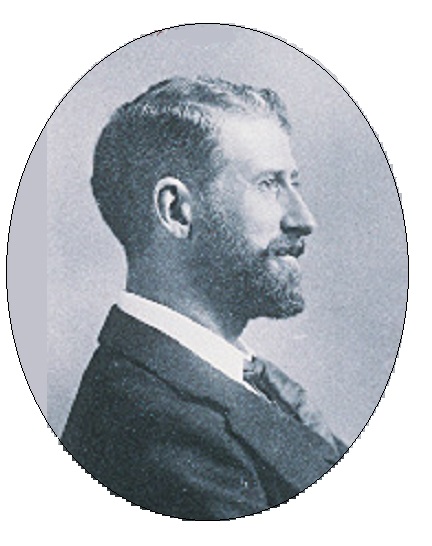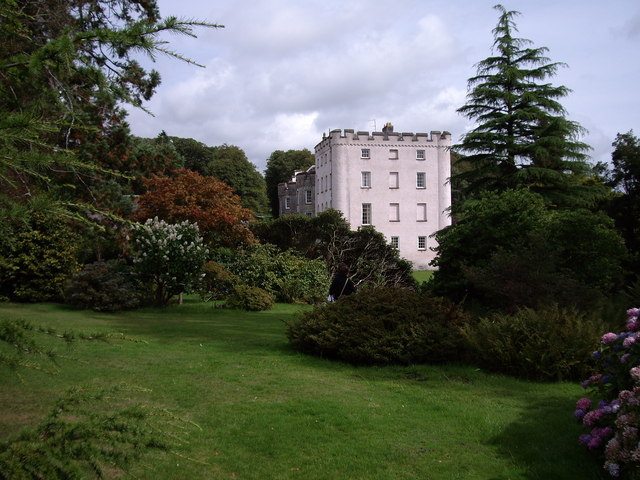|
Arthur Annesley, 1st Earl Of Anglesey
Arthur Annesley, 1st Earl of Anglesey, PC, (10 July 16146 April 1686) was an Anglo-Irish royalist statesman. After short periods as President of the Council of State and Treasurer of the Navy, he served as Lord Privy Seal between 1673 and 1682 for Charles II. He succeeded his father as 2nd Viscount Valentia in 1660, and he was created Earl of Anglesey in 1661. Early life Annesley was born in Dublin, Ireland, to Francis Annesley, 1st Viscount Valentia, and his first wife Dorothy, daughter of Sir John Philipps, Bt, of Picton Castle. He was educated at Magdalen College, Oxford, from which he graduated in 1634 as a Bachelor of Arts; that year, he was admitted into Lincoln's Inn. Having made the grand tour he returned to Ireland; and being employed by Parliament on a mission to the Duke of Ormonde, now reduced to the last extremities, he succeeded in concluding a treaty with him on 19 June 1647, thus securing the country from complete subjection to the rebels. In April 1647 he ... [...More Info...] [...Related Items...] OR: [Wikipedia] [Google] [Baidu] |
The Right Honourable
''The Right Honourable'' (abbreviation: The Rt Hon. or variations) is an honorific Style (form of address), style traditionally applied to certain persons and collective bodies in the United Kingdom, the former British Empire, and the Commonwealth of Nations. The term is predominantly used today as a style associated with the holding of certain senior public offices in the United Kingdom, Canada, New Zealand, and, to a lesser extent, Australia. ''Right'' in this context is an adverb meaning 'very' or 'fully'. Grammatically, ''The Right Honourable'' is an adjectival phrase which gives information about a person. As such, it is not considered correct to apply it in direct address, nor to use it on its own as a title in place of a name; but rather it is used in the Grammatical person, third person along with a name or noun to be modified. ''Right'' may be abbreviated to ''Rt'', and ''Honourable'' to ''Hon.'', or both. ''The'' is sometimes dropped in written abbreviated form, but is ... [...More Info...] [...Related Items...] OR: [Wikipedia] [Google] [Baidu] |
Thomas Osborne, 1st Duke Of Leeds
Thomas Osborne, 1st Duke of Leeds, (20 February 1632 – 26 July 1712) was an English Tories (British political party), Tory statesman. During the reign of Charles II of England, he was the leading figure in the English government for roughly five years in the mid-1670s. Osborne fell out of favour due to corruption and other scandals. He was Impeachment in the United Kingdom, impeached and eventually imprisoned in the Tower of London for five years until James II of England acceded in 1685. In 1688, he was one of the Invitation to William, Immortal Seven who invited William III of England, William of Orange to depose James II during the Glorious Revolution. Osborne was again the leading figure in England's government for a few years in the early 1690s before dying in 1712. Early life, 1632–1674 Osborne was the son of Sir Sir Edward Osborne, 1st Baronet, Edward Osborne, Baronet of Kiveton, Yorkshire, and his second wife Anne Walmesley, widow of Thomas Middleton; she was ... [...More Info...] [...Related Items...] OR: [Wikipedia] [Google] [Baidu] |
Presbyterianism
Presbyterianism is a historically Reformed Protestant tradition named for its form of church government by representative assemblies of elders, known as "presbyters". Though other Reformed churches are structurally similar, the word ''Presbyterian'' is applied to churches that trace their roots to the Church of Scotland or to English Dissenter groups that were formed during the English Civil War, 1642 to 1651. Presbyterian theology typically emphasises the sovereignty of God, the authority of the Scriptures, and the necessity of grace through faith in Christ. Scotland ensured Presbyterian church government in the 1707 Acts of Union, which created the Kingdom of Great Britain. In fact, most Presbyterians in England have a Scottish connection. The Presbyterian denomination was also taken to North America, Australia, and New Zealand, mostly by Scots and Scots-Irish immigrants. Scotland's Presbyterian denominations hold to the Reformed theology of John Calvin and his i ... [...More Info...] [...Related Items...] OR: [Wikipedia] [Google] [Baidu] |
Pride's Purge
Pride's Purge is the name commonly given to an event that took place on 6 December 1648, when soldiers prevented members of Parliament considered hostile to the New Model Army from entering the House of Commons of England. Despite defeat in the First English Civil War, Charles I of England, Charles I retained significant political power. This allowed him to create an alliance with Scots Covenanters and Roundhead, Parliamentarian moderates to restore him to the English throne. The result was the 1648 Second English Civil War, in which he was defeated once again. Convinced only his removal could end the conflict, senior commanders of the New Model Army took control of London on 5 December. The next day, soldiers commanded by Colonel Thomas Pride forcibly excluded from the Long Parliament those MPs viewed as their opponents, and arrested 45. The purge cleared the way for the Execution of Charles I, execution of Charles in January 1649, and establishment of the The Protectorate, Pro ... [...More Info...] [...Related Items...] OR: [Wikipedia] [Google] [Baidu] |
House Of Commons Of England
The House of Commons of England was the lower house of the Parliament of England (which Laws in Wales Acts 1535 and 1542, incorporated Wales) from its development in the 14th century to the union of England and Scotland in 1707, when it was replaced by the House of Commons of Great Britain after the 1707 Act of Union was passed in both the English and Scottish parliaments at the time. In 1801, with the union of Kingdom of Great Britain, Great Britain and Kingdom of Ireland, Ireland, that house was in turn replaced by the House of Commons of the United Kingdom. Origins The Parliament of England developed from the Magnum Concilium that advised the English monarch in medieval times. This royal council, meeting for short periods, included ecclesiastics, noblemen, and representatives of the county, counties (known as "knights of the shire"). The chief duty of the council was to approve taxes proposed by the Crown. In many cases, however, the council demanded the redress of the peo ... [...More Info...] [...Related Items...] OR: [Wikipedia] [Google] [Baidu] |
Radnorshire (UK Parliament Constituency)
Radnorshire was created in 1542 as a constituency of the House of Commons of the Parliament of England then of the Parliament of Great Britain from 1707 to 1800 and of the Parliament of the United Kingdom from 1801 to 1918. It elected one knight of the shire (MP) by the first past the post system. By 1918, having too small a relative population the area was combined with that of Breconshire to form Brecon and Radnor constituency An electoral (congressional, legislative, etc.) district, sometimes called a constituency, riding, or ward, is a geographical portion of a political unit, such as a country, state or province, city, or administrative region, created to provi .... Members of Parliament MPs 1542–1604 MPs 1604–1918 Election results Elections in the 1830s Elections in the 1840s Wilkins' death caused a by-election. Elections in the 1850s Elections in the 1860s Walsh was eleva ... [...More Info...] [...Related Items...] OR: [Wikipedia] [Google] [Baidu] |
James Butler, 1st Duke Of Ormonde
Lieutenant general, Lieutenant-General James FitzThomas Butler, 1st Duke of Ormond, Knight of the Garter, KG, Privy Council of England, PC (19 October 1610 – 21 July 1688), was an Anglo-Irish statesman and soldier, known as Earl of Ormond from 1634 to 1642 and Marquess of Ormond from 1642 to 1661. Following the failure of the senior line of the Butler dynasty, Butler family, he was the second representative of the Butler dynasty#Butlers of Kilcash and Thurles, Kilcash branch to inherit the earldom. His friend, the Thomas Wentworth, 1st Earl of Strafford, Earl of Strafford, secured his appointment as commander of the government army in Kingdom of Ireland, Ireland. Following the outbreak of the Irish Rebellion of 1641, he led government forces against the Confederate Ireland, Irish Catholic Confederation; when the First English Civil War began in August 1642, he supported the Cavalier, Royalists and in 1643 negotiated a ceasefire with the Confederation which allowed his troops ... [...More Info...] [...Related Items...] OR: [Wikipedia] [Google] [Baidu] |
List Of Parliaments Of England
This is a list of parliaments of England from the reign of King Henry III, when the '' Curia Regis'' developed into a body known as Parliament, until the creation of the Parliament of Great Britain in 1707. For later parliaments, see the List of parliaments of Great Britain. For the history of the English Parliament, see Parliament of England. The parliaments of England were traditionally referred to by the number counting forward from the start of the reign of a particular monarch, unless the parliament was notable enough to come to be known by a particular title, such as the Good Parliament or the Parliament of Merton. Parliaments of Henry III Parliaments of Edward I Parliaments of Edward II Parliaments of Edward III Parliaments of Richard II Parliaments of Henry IV Parliaments of Henry V Parliaments of Henry VI Parliaments of Edward IV Parliament of Richard III Parliaments of Henry VII Parliaments of Henry VIII Parliaments of Edward V ... [...More Info...] [...Related Items...] OR: [Wikipedia] [Google] [Baidu] |
Lincoln's Inn
The Honourable Society of Lincoln's Inn, commonly known as Lincoln's Inn, is one of the four Inns of Court (professional associations for Barrister, barristers and judges) in London. To be called to the bar in order to practise as a barrister in England and Wales, an individual must belong to one of these inns. The other three are Middle Temple, Inner Temple, and Gray's Inn. Lincoln's Inn is situated in Holborn, in the London Borough of Camden, just on the border with the City of London and the City of Westminster, and across the road from London School of Economics and Political Science, Royal Courts of Justice and King's College London's Maughan Library. The nearest tube station is Holborn tube station or Chancery Lane tube station, Chancery Lane. Lincoln's Inn is the largest Inn, covering . It is believed to be named after Henry de Lacy, 3rd Earl of Lincoln. History During the 12th and early 13th centuries, the law was taught in the City of London, primarily by the clergy ... [...More Info...] [...Related Items...] OR: [Wikipedia] [Google] [Baidu] |
Bachelor Of Arts
A Bachelor of Arts (abbreviated B.A., BA, A.B. or AB; from the Latin ', ', or ') is the holder of a bachelor's degree awarded for an undergraduate program in the liberal arts, or, in some cases, other disciplines. A Bachelor of Arts degree course is generally completed in three or four years, depending on the country and institution. * Degree attainment typically takes five or more years in Argentina, Brazil, Chile, and Peru. * Degree attainment typically takes four years in Afghanistan, Armenia, Azerbaijan, Bangladesh, Brunei, Bulgaria, Canada (except Quebec), China, Egypt, Finland, Georgia, Ghana, Greece, Hong Kong, Indonesia, India, Iran, Iraq, Ireland, Jamaica, Japan, Kazakhstan, Kenya, Kuwait, Latvia, Lebanon, Lithuania, Malaysia, Mexico, Mongolia, Myanmar, Nepal, the Netherlands, Nigeria, Pakistan, the Philippines, Qatar, Russia, Saudi Arabia, Scotland, Serbia, Singapore, South Africa, South Korea, Spain, Sri Lanka, Taiwan, Thailand, Turkey, Ukraine, the United S ... [...More Info...] [...Related Items...] OR: [Wikipedia] [Google] [Baidu] |
Picton Castle
Picton Castle () is a medieval castle near Haverfordwest in the community of Uzmaston, Boulston and Slebech, Pembrokeshire, Wales. Originally built at the end of the 13th century by a Flemish knight, it later came into the hands of Sir John Wogan. The castle and gardens are now owned and managed by the Picton Castle Trust, a registered charity, for the benefit of the public. It is of unusual construction and has been remodelled several times during its history. The castle is a Grade I listed building and its gardens and park are designated at Grade II* on the Cadw/ICOMOS Register of Parks and Gardens of Special Historic Interest in Wales. History Until the late eleventh century, this part of southwestern Wales was part of the Welsh kingdom of Deheubarth. After the death in 1093 of the king of Deheubarth, Rhys ap Tewdwr, in the Battle of Brecon, the Normans took advantage of the lack of leadership among the Welsh, and Norman forces seized much of South Wales. In 1102, followin ... [...More Info...] [...Related Items...] OR: [Wikipedia] [Google] [Baidu] |
Sir John Philipps, 1st Baronet
Sir John Philipps, 1st Baronet (died 27 March 1629) was a Welsh landowner and politician who sat in the House of Commons in 1601. Philipps was the son of Morgan Philipps of Picton and his wife Elizabeth Fletcher, daughter of Richard Fletcher of Bangor, Caernarvonshire. He was registrar of the diocese of Bangor. In 1585 he succeeded to the estate of Picton Castle which had passed to his father from William Philipps who was MP for Pembrokeshire in 1559. He spent much of his life involved in property disputes. He was High Sheriff of Pembrokeshire in 1595. In 1601, Philipps was elected Member of Parliament for Pembrokeshire. He was appointed a J.P on 13 April 1603. In 1611 he was High Sheriff of Pembrokeshire again.W R Williams''The Parliamentary History of the Principality of Wales'' Accessed 30 November 2022. He was created a baronet on 9 November 1621. He was High Sheriff of Carmarthenshire for 1622–23. Philipps died in 1629 and was buried at Slebech. Family Philipps mar ... [...More Info...] [...Related Items...] OR: [Wikipedia] [Google] [Baidu] |







